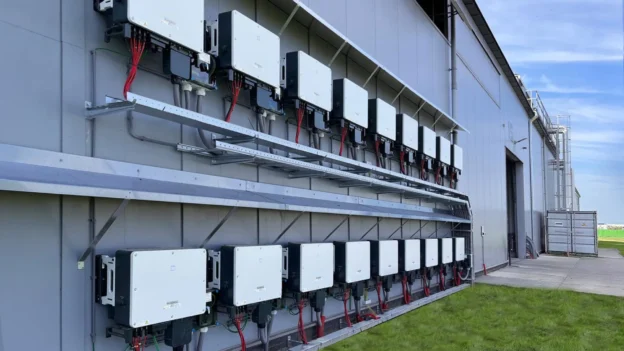The collaboration between Sungrow and Zonzo Duurzame Energie has borne fruit in the Netherlands, where Ronico’s greenhouses are now powered by a significant portion of solar energy. The Dutch brand, recognized globally for its leadership in floriculture, grows more than 300 million tulips a year. Thanks to a new solar plant equipped with 5,000 panels and 48 Sungrow SG33CX inverters, the company is taking a new step towards energy sustainability.
Ronico improves efficiency thanks to solar energy
Located on the Elbaweg, the facility enables Ronico to generate 1.7 million kilowatt-hours per year, which represents a significant portion of its total consumption of 6.7 million. During the months with the highest irradiation, the company can cover critical demand peaks without relying entirely on the grid. This improvement in energy efficiency strengthens production in key seasons and reduces the environmental impact of a historically resource-intensive industry.
Sungrow was selected for its track record and reliability. The SG33CX inverters inverters stand out for their compact design, ease of installation and minimal maintenance. They incorporate three MPPT trackers with six strings each, which optimizes energy harvesting. energy harvesting even in asymmetrical module configurations. In addition, their integrated protection system detects faults and safely disconnects the system, complying with the requirements of the European NIS2 Directive.
The Ronico case is an example of how distributed generation can be integrated into intensive agricultural sectors. For EPCs like Zonzo, having Sungrow means having a technical partner that not only delivers reliable technology, but also continuous support in the field. This alliance is looking to extend to other industries and crops in Europe, boosting the use of renewable energy where it is needed most.
Source and photo: Sungrow

